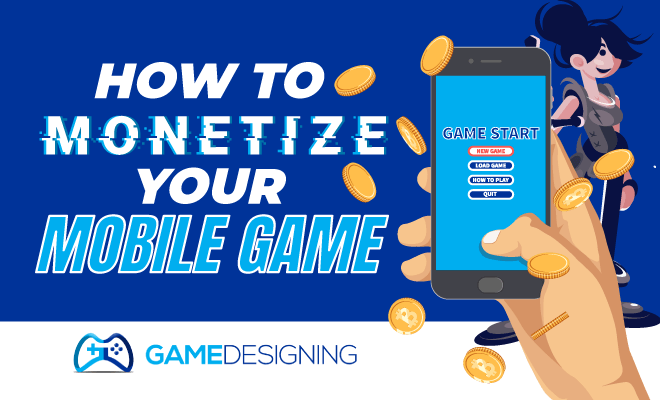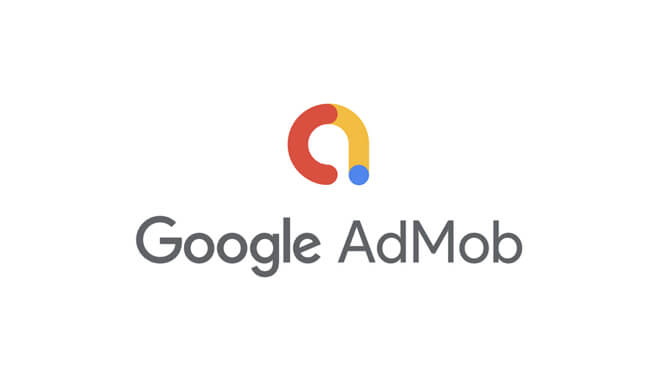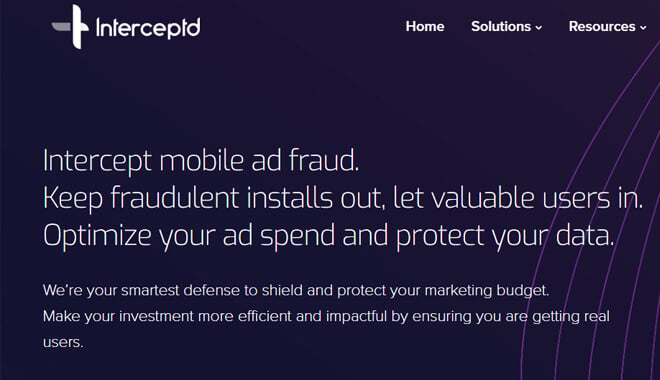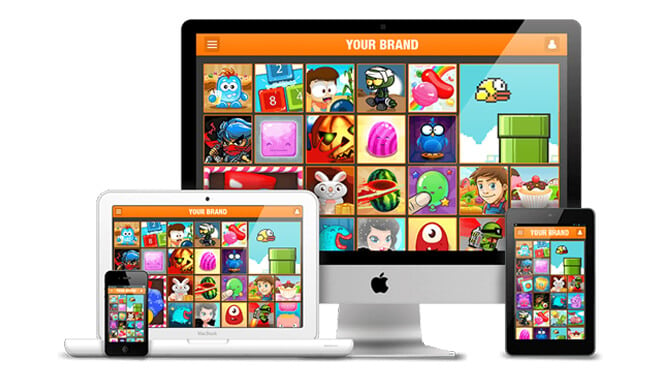Freemium Mobile Games Design & Monetization Книга
Home » Learn » 13 Ways To Monetize Your Mobile Games: Which Business Model Brings In More Revenue?

I will be the first person to admit that I am addicted to Words with Friends. It really isn't healthy: I will stare at my game board on my phone for long periods of time trying to get the very best word out of my 7 letters to grind my opponent into dust.
After inevitably crafting to perfect word to really stick it to my opponent, an ad usually plays. It is usually for some sort of cell phone game, with the ads being different each time.
By now we have all heard of monetization. Whether it is through YouTube videos being demonetized, or other ways, monetization is quickly becoming a crucial part of technology, especially in 2021 and beyond.
Monetization
But what exactly is monetization? What is all the fuss? Monetization is a really general term for multiple avenues of changing something into money. For example, views on YouTube can generate income for the uploader of the video. That is why the controversies on YouTube about monetization and demonetization have become such a prevalent topic; it affects peoples' lives.
It could potentially affect your life too. If you have something that you can bring to the world and monetize it through ads, you can get valuable consumer engagements, or in other words, people clicking, viewing, and playing your game.
This is a crucial concept. Not to be critical at all, but just think about how much time people spend on their phones. It is insane. My commute on the subway every morning is just people looking down on the screen of their smartphones. There is a huge opportunity for engagement and monetization.
You want to make a game. You do! The idea has been right at your fingertips, or it is already out but you aren't sure how to monetize it. Having a free game on the app store is great, but you want to see returns on your project. That's your baby, you need to care for it! You do this by getting the most CPI—otherwise known as cost per impression.
In web traffic, that is how much money something brings in every time it is displayed. With a page view, the ads on the page count as one cost per impression.
You can also see, on sites like Twitter, how many engagements or impressions your post has gotten.
Pre-Rolls & In-App Advertising

Every time I log into Words with Friends, I get a daily reward of precious gold coins. These can be used to buy power-ups, furthering the advantage I have over my friends. At first, you get 3 gold coins, but you are further prompted to watch an optional video to receive more coins. 3 more coins just for a video?
Not bad, I'll take it.
That is exactly what the developer, Zynga, has tailored their game to do. By incentivizing the player to get more of that sweet, sweet in-game currency, they can easily monetize their game while also benefitting the player. This is definitely a win/win situation.
Another valuable method of advertising is called skippable pre-roll. With these styles of engagements, the player is shown a video advertisement. The ad usually lasts around 10 to 15 seconds, making them more digestible to the viewer.
Some advertisers have made some blunders, however: I was once flooded with pre-roll ads that were over 30 seconds. It was actually easier to quit out of the app and start it up again than sit through the advertisement.
These personal examples aside, I would have to say that pre-rolls are some of the best current advertising that you can take part in. The idea is to grab the user's attention, (and definitely NOT have them get frustrated with the app). Pre-rolls have a great record of accomplishment statistically.
Compared to other forms of video ad, when they play before videos, users vary significantly don't see them as an interruption. Not only that, but people are more likely to recall the ad if they are pre-rolls. Pre-rolls have insanely significant numbers on their side when it comes to brand recognition, brand recall, and overall user experience. What's not to like?
In addition, you can make your pre-rolls skippable. No, no, don't worry: the ad will still be counted as an engagement, even in the user's mind. This struck me as revolutionary: "A Nielsen study commissioned by Facebook discovered additional pre-roll advertising statistics.
They found that brands with video ads viewed for less than even one second still saw increased ad recall, brand awareness, and purchase intent…"
There are also mid-rolls, which you guessed it, play in the middle of videos. While mid-rolls are played through more, they aren't as viewed as favorably. To my surprise, users actually had a favorable view of skippable pre-rolls. The significance of how short, yet quality-driven they need to be, is definitely a part of their success.
Along with simple incentives, in-app advertising also uses algorithms to pull up an ad, (remember when I said there was an ad after every move in Words with Friends?) and show it to the user.
Game and app developers have prioritized keeping the gamer's experience as fluid as possible while also monetizing the game. They do this with the aid of mobile ad networks.
Mobile Ad Networks
Mobile Ad networks provide you with the best ways possible to include ads in your game without breaking the player's experience. That is super important; I have played many games where an annoying ad pops up and breaks my concentration. But you can easily avoid that with these companies.
Unity Ads

Unity Ads is actually a part of the Unity Engine, the beloved engine used by many game developers—indie and professional alike.
"Rewarded video is more engaging than any other online advertising format. With nearly 70% of users demonstrating favorable attitudes to rewarded video, Unity reaches them at scale without negatively impacting player retention."
I actually trust the people at Unity right away. Okay, I'm a little biased. Maybe one of my top games of 2016—Shadow Tactics: Blade of the Shogun was made with Unity. Okay, my bias is showing, I'll stop.
But seriously, you can't go wrong with Unity. Not only are they impressive as a game engine, but their potential to help you with game ads is pretty solid. All you need is a Unity account to get things kicked off. They promise great scalability, with ad revenue coming from whichever medium your project is in.
Zynga themselves use Unity—exclusively. That should be pretty telling, folks. The veritable king of mobile apps going exclusive. That translates into getting possible ad revenue from over 1 billion Zynga app users worldwide. This is a huge win, and a great endorsement for Unity Ads.
AdMob

AdMob started in 2006 and was acquired by none other than Google in 2009. Ever since then, they have been growing in importance in apps in games. This parentage from Google is the key that separates this ad network from the rest of the pack. It has access to countless databases of Google advertisers.
This along with the fact that they are everywhere on the app market: over 1 million apps and games have the trademark touch of AdMob to help their creators along. Out of all of the ad networks, I believe that AdMob should be one of the first you check out.
WebEye
WebEye prides itself on dealing with ads and games. They cater to billions of people within hundreds of countries to nix financial risks and bring solid advertisement retention to the game. Their extremely wide reach proves that you are in great hands if you choose them as your ad network.
Intercepted

Check this one out. Interceptd, (yes, that is how it's spelled), is committed not only to ads but to protect your data at all costs. It helps you monitor your data, helps you choose the best avenues to take when it comes to CPI, and protects your projects from malware and fake data. I really like the commitment that these guys have given potential users.
We all know the grave danger we can be in if our data is in the wrong hands, especially your potential ad revenue. Emre Fadillioglu, the creator, is committed to no conflicts of interest; it is a completely private auditor.
These are only a few of the great robust mobile ad networks you can choose from. We are truly living in the Golden Age of advertising.
Paid Apps and 'Freemium'
If you are launching your pet project, you could always make it a paid app. Obviously, this is a straight-up easier way to see more revenue right away. This is easier if you have a large fan base. For example, people like me who play Words with Friends are more likely to pay for the 'full' version of the game, (i.e. no ads, etc.), then someone who isn't a dedicated fan.
This, in turn, translates to if you have a newer, indie game. Chances are people who wouldn't exactly hedge their bets on a smaller game compared to a powerhouse from Zynga. My mom would choose to funnel thousands of dollars into FarmVille than a cool little platformer you just released, no offense.
Paid apps had a good year in 2017; overall paid apps received $29 billion, while in-app purchases for those apps received a whopping $37 billion. By next year, the revenue brought in by mobile apps is projected to pass $190 billion dollars.
Ever since 2009 when Apple introduced microtransactions on its apps, revenue in apps and mobile games has increased so rapidly.
In 2017, Pokémon GO was the most profitable app, with over $2 billion. Interesting thing is, it was completely free. Niantic harnessed its revenue through in-app purchases and ads. Players have the opportunity to move things along by doing things like buying 100 Pokécoins and can speed along egg hatching and acquiring new items
It definitely didn't hurt that they were also at the helm of a beloved franchise that the entire world loves.
We are seeing these microtransactions in many games now. This can be referred to as 'freemium' (premium + free). This is when a product is offered for free but charge later down the line for other features. Although they are widely reviled by some gamers, they still make the game developers and advertisers a pretty penny.
Some view it as pay to play, as, in some instances, it can give some gamers advantages over others, and some even see it as cheating themselves of the gameplay experience. It is a hotly contested issue that many gamers, and families of gamers, despise, and view as players that have more money being able to game the system while those who aren't so fortunate are forced to grind it out.
What is the fun in buying that cool new outfit that you can normally unlock at the end of the game? These debates rage on, but microtransactions are a great business model for game developers. "In freemium mobile games, the top 0.19% of players generate 48% of total revenue" This is staggering.
The really dedicated gamers, players who play their games for hours a day, are the steadiest stream of revenue for the game. Freemium is definitely a viable model if you wish to use it. If you have a very competitive game, something multiplayer perhaps, freemium can possibly be a steady stream of revenue.
This is where making your game free might be the best plan of attack. Again, it all depends on who you are trying to reach, how successful your game is, what your aims are, and what kind of business and monetization model you have going forward.
Subscriptions

The old tried and true method of subscriptions is also a viable option. You can add subscription features to apps and games to increase your revenue. Think of all of the successful subscription models that have been implemented in some iconic games: World of Warcraft, EverQuest, and Dark Age of Camelot. Subscriptions work, people!
If you provide great features and benefits to those that subscribe, you will really put yourself apart from the rest.
They also make the player feel like they have been included in something special, "Due to the retention associated with monthly subscriptions, the ARPU curves for subscribers are steeper than those of non-subscribers leading to much higher overall LTVs for these players." — Scopely"
This should be music to game developers' ears, as this could be an easy way for loyal customers to show their appreciation for your game. Subscription features could implement freemium and pay to play aspects into one model.
Crowdfunding
This might be my favorite form. This is super unique in that it builds up a great and robust relationship with the creator and customer from day 1. It is an intimate chance for investors to put their money upfront for a great promised product.
We have seen great Kickstarter campaigns like Exploding Kittens and Kickstarter has been involved in over $1 billion in startups over their history.
People really like to invest in a startup; it builds a personal connection. You can probably talk right to the creator, asking questions, voicing concerns, and getting feedback. For the developers, i.e. YOU, users, and backers can give you valuable info that could further hone your product so that when it actually releases, it is the best it can be.
While all of this is great, "Unfortunately, non-tangible products are poorly received…
For example, films have inescapable budgets, and physical products need molds, manufacturing, and expensive minimums. Neither is possible without significant startup funds. However, apps and software are the exact opposite.
Time and expertise are all that is necessary, inventory costs are zero and there is funding aplenty for those willing to part with equity."
With crowdfunding, although the landscape can seem intimidating, I believe in time we will have some great apps and games.
E-mail Marketing & E-mail Blasts

A foundation of the internet, e-mail has been connecting us for decades. Along with that, it is a vital transference of digital information. This can be harnessed especially for your app or game. You could partake in some serious e-mail marketing to get the word out about your project.
I mean, technically you could e-ail everyone you know and say, "Hey, check out this cool game I made" and it would be considered e-mail marketing, but I am referring to something a little deeper. There are many services that you can employ, companies, that can help you get the word out about your app. E-mail marketing is an art; people have been trying to master it for years.
You can also employ these companies to provide what is called an 'e-mail blast'. E-mail blasts, (aside from having a killer name), is an e-mail that is sent to a large group of people. If you were crowdfunding your app, you could e-mail blast the same message to, (hopefully), thousands of followers, updating them and advertising your app.
This is a great method that advertisers and marketers all over the world employ to get more bang for their buck. Companies like Constant Contact has a 97% approval rating amongst its user base and the #1 rated email marketing platform. That's some pretty high praise!
SMS Marketing
SMS, or simply marketing by text message, is an extremely popular method of getting the word out about the hottest new app. Again, people have been more dependent on their phones for not only social media but for everyday things like the weather or even what time it is.
This is a perfect way for you or a business to send out promotional materials, messages, and coupons to potential customers.
This little gateway into everyone's palm is an invaluable resource if you are trying to gain revenue on your game or app. For example, I signed up with an organization, and every month they send me promotional ads and surveys for me to complete. It isn't even annoying, as I support the company.
Think of the Kickstarter examples: you could ideally get in contact with multiple users at once offering promotions and updates that they are clamoring for.
An important aspect of this method is that the customer has given consent to be messaged by you or your company. SMS marketing allows for you to see, in real-time, if the ideas and actions you have put into place have worked. Some juicy stats for you:
- 95% of text messages are read within the first 5 minutes
- 70% of Americans would like offers from their favorite businesses sent right to their cellphones
- The average American looks at their cellphone 150 times per day
- 22% of text messages with value are forwarded on to friends and family
- The average redemption rate for a mobile coupon is 20% (SlickText)
Affiliate Marketing and Lead Generation

Affiliate marketing refers to a model of marketing that rewards the affiliate for bringing in visitors. Usually a fee per visit, etc. The 'affiliates' that you work with get to work making links that people click on to get views or downloads. This could be just the ticket for what you are building app or game-wise.
Affiliates are experts at advertising and place applicable links on sites that people are pretty much guaranteed to click on. It is like an expert ninja sneaking in and getting the job done. Then you and the ninja—err—affiliate gets paid a commission. The services of these affiliates can serve as an extreme boon to you if you are having trouble getting traffic to your project.
The viability of affiliate marketing has been able to move from giant Fortune 500 companies, and down the stream to people that may need expert services. An important aspect of this model is determining whether or not this is the best one for you. Are you willing to pay the commission fee for the affiliates?
Then their services might be just what you needed in your project. And, like many other options, it is based on networking. Remember to use this as a networking opportunity to get to meet more businesses and people to help you on your quest!
Sponsorships
Another way to get the most out of your app is good old sponsorships. These days, companies are tying in sponsorships with apps and games. Just the other day, I went into Whole Foods, and if you are an Amazon Prime member, you get a discount over the Whole Foods app. As you can see, it is becoming a part of everyday life.
This is great in terms of brand recognition. Everyone knows Subway or Marriott. People have been shown to react favorably to these ads on certain apps.
There are also some exclusive offers that companies can use the app to promote at launch: "For example, The Marriott Rewards Chase card is promoting its rewards perks to on-the-go business travelers with an exclusive sponsorship of the new Gayot.com mobile application, which offers reviews of restaurants written by professionals.
This is only good for your app or game. Having a heavy hitter of a company using your app to advertise would be a godsend, and the brand recognition and favorability only bring great revenue and views.
While all of this seems like sunshine and roses, you need to tread carefully, as too much heavy-handed ad inclusion could alienate users, making your app seem a little too corporate. Again, it is always about a great give and takes between developer and user.
Monetization Strategy
By now, you should be a well-versed master in monetization strategies. It may seem daunting, but there are countless guides, (like this one), to help you find your way. It is completely up to you on how to monetize your game. The most important aspects, however, are knowing your brand inside and out and having a good working relationship with ad networks and customers.
Knowing your demographic is a key piece of info to have before you choose your preferred way of monetization. Looking for simple ad revenue with a small game? Probably head with the free app option.
What if you know people will pay to play your great game?
Make the app purchasable on an app store. Just weigh the pros and cons carefully to optimize your revenue. If you look at all the stats, look at your options, and make a plan, you will be cruising on sweet, sweet ad revenue in 2021! Good luck!
References:(blog.google), (pexels), (pexels)
Freemium Mobile Games Design & Monetization Книга
Source: https://www.gamedesigning.org/learn/mobile-monetization/
Posted by: smithnalled.blogspot.com

0 Response to "Freemium Mobile Games Design & Monetization Книга"
Post a Comment